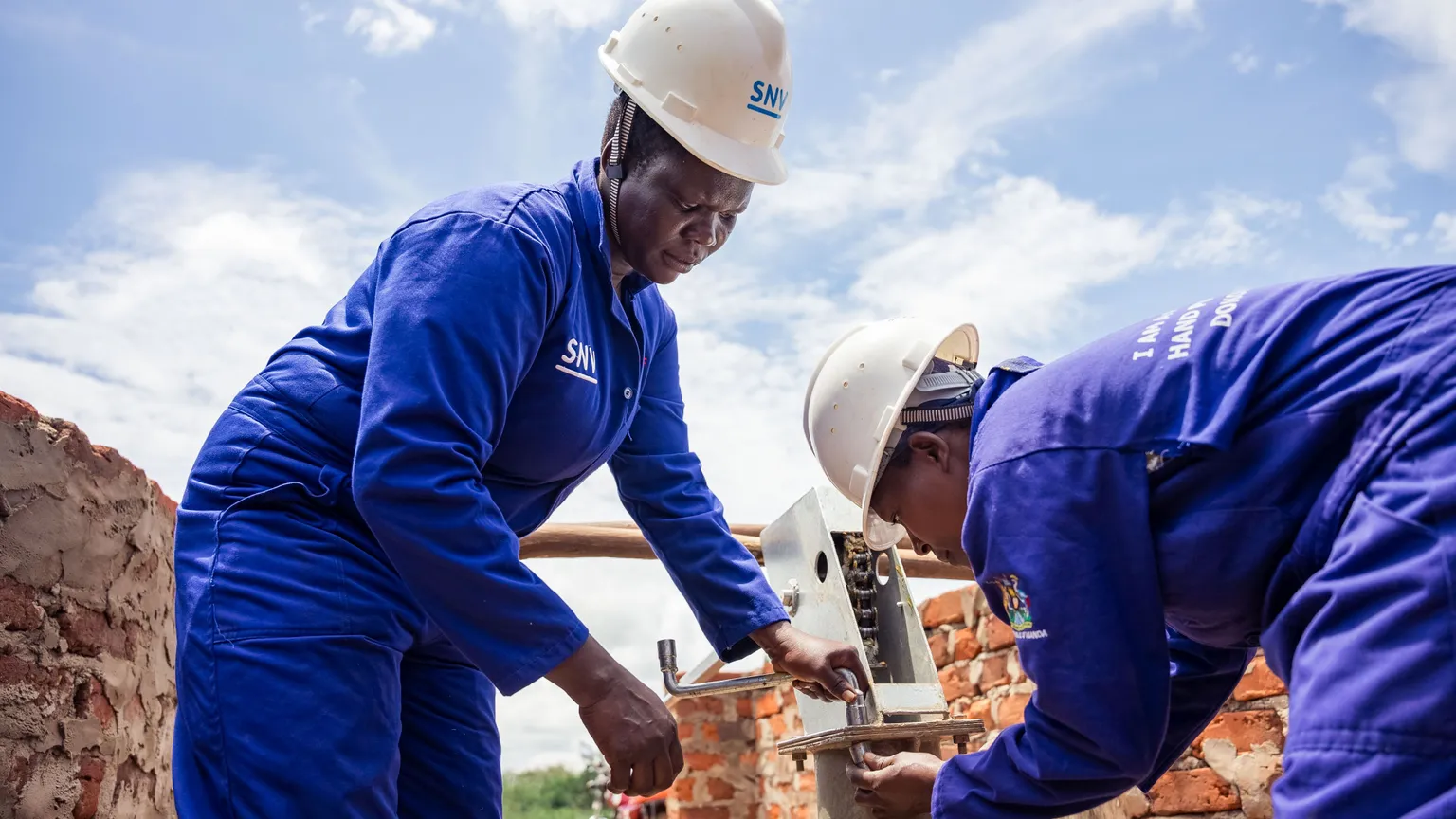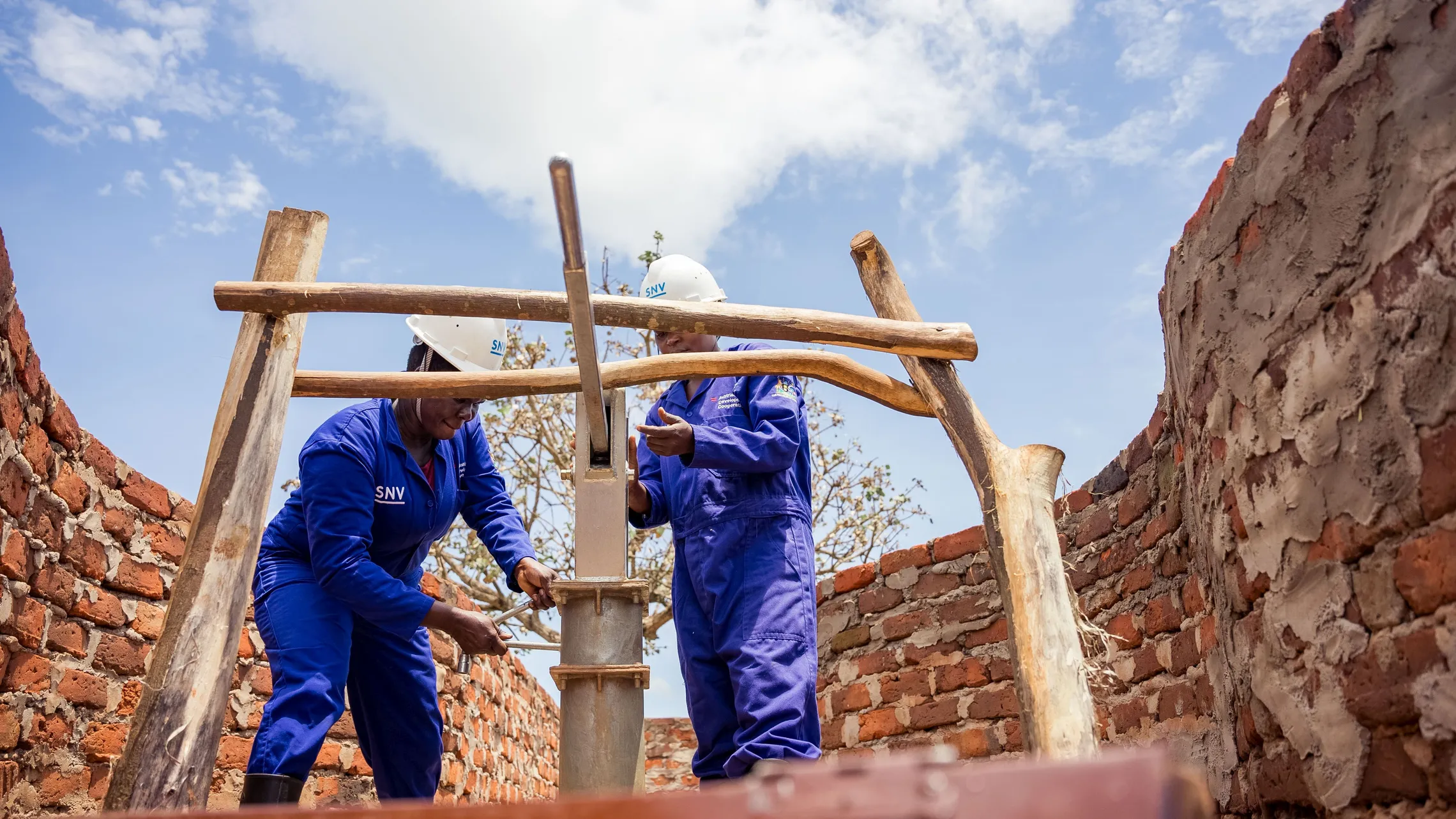The women keeping Uganda’s water flowing
In Uganda’s rural districts, access to clean water remains a daily challenge for many.

Through the damp early morning fog of Dokolo District in Uganda, Tino Beatrice strides confidently to repair a broken borehole. Wearing her blue protective overalls with pride, she carries her toolbox towards the site of distress: queues of people with jerrycans waiting to be filled, the handpump out of action.
Nearly 67% of the population of rural communities rely on rural point water sources such as boreholes and shallow wells with handpumps, according to the Ministry of Water and Environment in Uganda. The Lango sub-region is one of the most underserved areas, and women and children are forced to trek long distances to fetch water from unreliable sources. Despite numerous efforts to address the issue, about 81% water points in the region remain dysfunctional, significantly disrupting daily life. And many more community water sources, each serving about 250 people, are needed.
Hand Pump Mechanics (HPMs) are vital in operating and maintaining rural water supply sources. The Ministry of Water and Environment, and partners like SNV, have been supporting the skilling of HPMs across all district sub-counties for over two decades. In 2014, formal recognition began: HPM associations were contracted by sub-county water boards to shift from reactive repairs to preventive maintenance.

A group of Hand Pump Mechanics pose for a photo.
SNV

Beatrice fixes a borehole.
SNV
Challenging bias, building opportunity
For years, repairing and maintaining boreholes have typically been associated with men. Deep-rooted gender norms have kept women—those often most affected by service water disruptions—on the sidelines of technical and decision-making roles.
In Water and Sanitation Committees (WSCs), male-dominated leadership has further limited women’s participation across the water service chain. Despite their knowledge and lived experience, women’s contributions were undervalued, their voices underrepresented.
Determined to break the barriers to participation and decision-making, and with support from local governments and NGOs, more women in the Lango subregion—from Lira to Kole, Alebtong to Dokolo—are being trained as HPMs, becoming visible, trusted professionals and role models in their communities.
From repair to resilience
The Sustainable Water Supply, Sanitation, and Hygiene for All (SWaSSH4A) project, supported by the Austrian Development Cooperation, applies a Gender Equality and Social Inclusion (GESI) lens to fostering collaboration between men and women across the water service chain. Targeted project interventions are helping address the underrepresentation of female HPMs (only 13% at the start of the project), the lack of Personal Protective Equipment (PPE), and maintenance tool kits.
In partnership with Caritas Lira and Global Forum for Development (GLOFORD), SNV trained ten female HPMs, introducing new energy and perspectives into the associations and their relation with the Sub-County Boards and the community WSCs. Maintenance tool kits were distributed to every sub-county, and all HPMs were equipped with essential protective gear which also elevates the perception of them being professionals. “Before, we did not have enough tools and protective gear to do our jobs safely, which made our work challenging,” says Beatrice.

Systemic changes are delivering real results
By strengthening the role of HPMs and providing them with district-level repair contracts for community-led maintenance systems, the reliability of rural water services has steadily improved. In some districts, functionality has increased by 5% each year. A recent midline survey found a 6.2% drop in households relying on unsafe water sources, alongside a 13.5% rise in households using safe water from boreholes or tubewells. There was also a modest but meaningful 0.4% increase in continuous water access, defined as having reliable water for up to 24 hours daily with minimal annual disruptions.
Beyond numbers, these changes have transformed how communities view and manage their water systems. Strengthened Hand Pump Mechanic Associations have fostered greater local ownership and accountability. Today, HPMs are preventing breakdowns before they happen. Their visibility and dedication have earned them trust as critical service providers. The growing presence of women among their ranks is proving that an inclusive, diverse workforce makes for a stronger, more sustainable water system.
Where Beatrice’s arrival at the scene of an inactive borehole was once met with surprise and intrigue, she is now greeted with respect and relief. “Now I can move confidently within the community and to the water points to have them repaired,” says Beatrice.
Water systems are strongest when everyone has a seat at the table and the tools to contribute.
When women and men are trained, equipped, and empowered to take on skilled roles and shape decisions, water services become more sustainable, equitable, and resilient. This isn’t just about fixing broken pumps—it’s about building inclusive systems where every voice counts, every skill is recognised, and every contribution matters. And in doing so, women are not only keeping communities flowing—they’re paving the way for the next generation of girls to lead.
About SWaSSH4A
Sustainable Water Supply, Sanitation, and Hygiene for All (SWaSSH4A) is a three-year (November 2022 to October 2025) project implemented by SNV in Alebtong, Dokolo, Kole, and Lira districts in Northern Uganda´s Lango Sub-Region. The Austrian Development Cooperation supported project aims to ensure sustained access to a safe water supply for 237,500 people and improved climate-resilient basic sanitation for 50,000 people and 40,000 people gaining access to basic handwashing with soap.